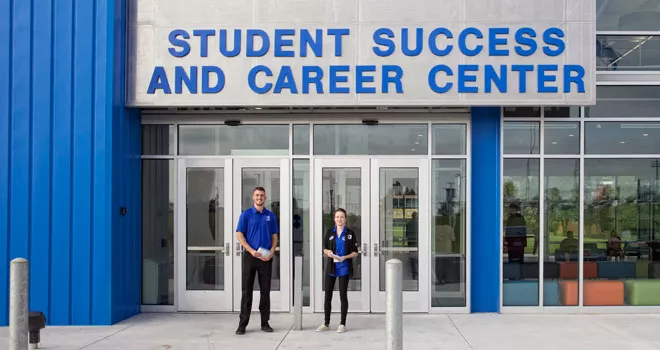Air Traffic Control, A.A.S.
Launch your career in aviation with TCC’s Air Traffic Control program. Get hands-on training in our FAA-approved, Enhanced AT-CTI facility.
About the Air Traffic Control Degree
Success in Air Traffic Control takes precision, fast thinking, and teamwork. If you like solving complex problems under pressure and staying calm in high-stakes situations, this field could be a great fit for you. Air traffic controllers use sharp focus, clear communication, and sound judgment to guide aircraft safely during takeoff, landing, and flight. Every decision matters—keeping travelers safe and air traffic running smoothly.
What you can expect from a career in Air Traffic Control:
- Career in high demand: Controllers are always in demand. The FAA continually hires new professionals to keep the skies safe and efficient.
- High earning potential: The Air Traffic Control A.A.S. is one of the highest earning associate degrees. Experienced professionals can make over $130,000 per year.
- Exciting, high-impact work: No two days are alike. You’ll make real-time decisions that directly affect the safety of passengers nationwide.
- Respected federal career: As an FAA controller, you’ll be part of a trusted, elite group keeping aviation safe.
- Strong sense of purpose: Every shift matters. Your work keeps people safe and the system running smoothly.
Air Traffic Control Program Details
At TCC, you’ll train on our advanced radar and control tower simulators that mirror real FAA facilities. Our instructors, former FAA controllers, bring decades of experience and offer mentorship to guide your success. Our graduates consistently perform well on the FAA’s Air Traffic Skills Assessment (ATSA).
Our program is one of a select few nationwide—and one of only two in Oklahoma—designated by the FAA as an Enhanced Air Traffic Collegiate Training Initiative (AT-CTI) program. This means our graduates are qualified to bypass the FAA Academy and advance straight to on-the-job training as Air Traffic Control Specialists.
Master the art of air traffic management through our program. Develop skills that empower you to excel in communication, decision-making, and ensuring safe and efficient air travel.
After successfully completing this program, you will have the ability to:
- Determine a plan of action when separating aircraft across airspaces using standards.
- Communicate according to FAR standard 71.10.65
- Organize traffic flow in a safe, orderly, and expeditious manner.
- Perform in a team setting with professionalism.
View the Degree Requirements to find out which courses and credits you'll need to earn your degree.
FAA Requirements:
- Be a U.S. citizen.
- Be under 31 years old upon FAA employment.
- Pass an FAA Class II medical for Air Traffic Controllers.
- Pass a security investigation.
- Three years of work experience, a Bachelor's degree, or a blend of education and experience totaling three years.
- Pass the FAA air traffic pre-employment tests.
- Speak English clearly enough for others to understand you on communication equipment.
- Complete an interview.
Explore the Program Map to see how you can complete your degree.
Program Contact
TCC Aviation Advisor
aviationcenter@tulsacc.edu
918-595-3717

Careers in Air Traffic Control
Connect with our Career Services to explore resources for career planning and job preparation, including air traffic controller jobs.
Related News
TCC Student Becomes First Enhanced Air Traffic Control Graduate Hired by FAA
TCC’s Rebecca Nobles became the first graduate of an Enhanced Air Traffic Control program in the United States to be hired directly by the Federal Aviation Administration. Nobles bypassed the traditional FAA Academy thanks to TCC’s participation in the FAA’s Enhanced Air Traffic–Collegiate Training Initiative.
TCC One of First in Nation to Join FAA’s Enhanced Air Traffic Training Program
Tulsa Community College has signed an agreement with the Federal Aviation Administration to become one of the nation’s first schools in the Enhanced Air Traffic – Collegiate Training Initiative (AT-CTI), part of a strategic effort to address the national shortage of air traffic controllers.
